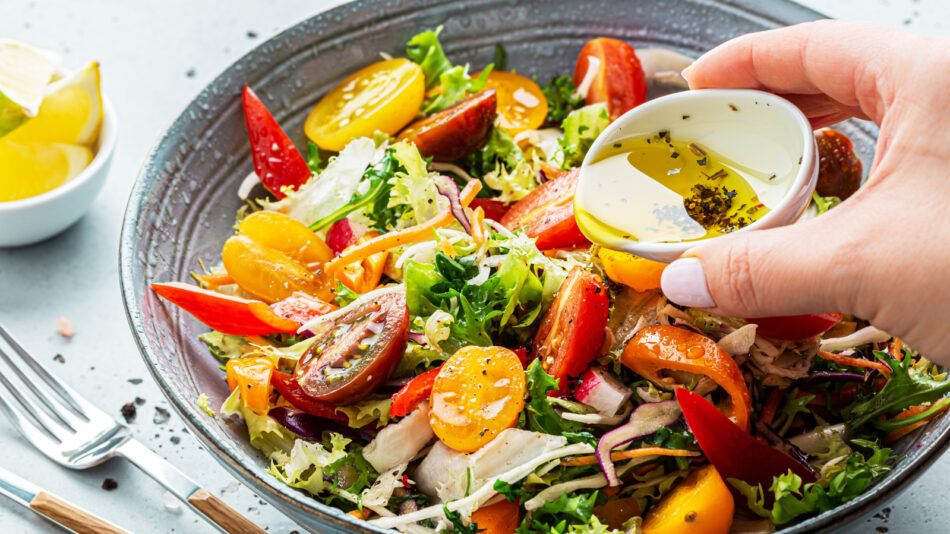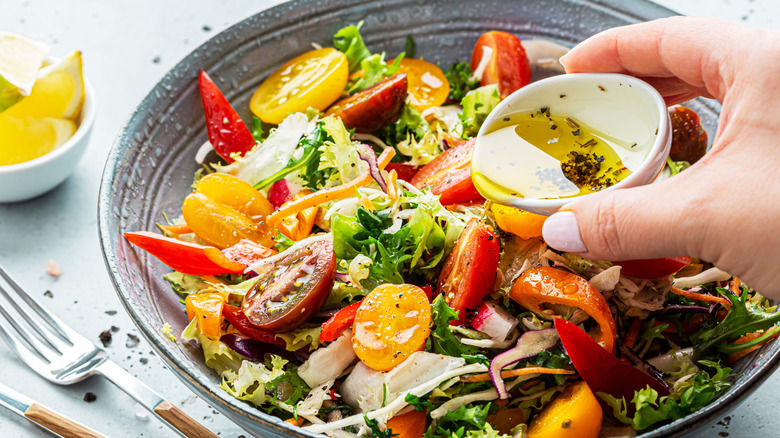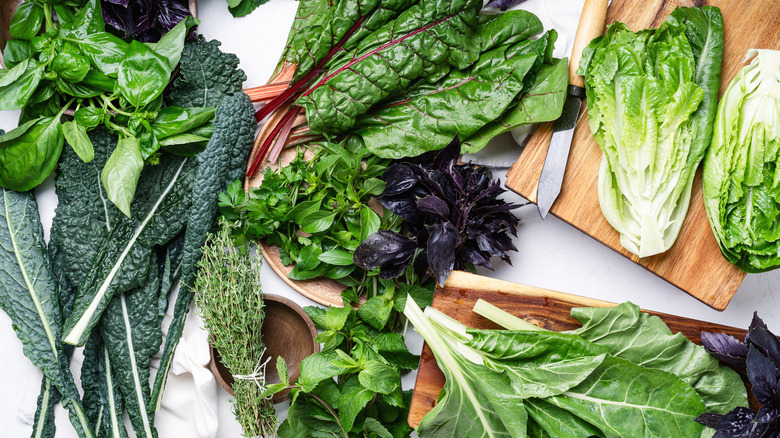Building a good salad at home with the right dressing and greens is one of those things that should be easy, but it can end up being overwhelming. The most obvious problem is that there are a lot of different types of salad dressing to choose from — even within those categories, you’ll get plenty of variation. This frustration is compounded by the seemingly simple nature of tasty salads you get at restaurants, where just a few ingredients perfectly paired with an easy dressing turn out so much better than what you make at home. What do these people understand that you don’t? How are they navigating all those choices? To help us answer these questions we asked an expert, Fabian Pereira, the vice president of marketing at Fresh Express, for advice on how to pair salad dressings with greens.
Pereira has lots of great advice, but much of it stems from a basic core concept. He says, “When pairing salad greens with dressings, I always suggest starting with balance.” This means finding a dressing with similar characteristics as your greens. As an example he explains, “Tender greens like butter, spring mix, and spinach are mild in flavor and slightly sweet. They pair well with light vinaigrettes and sweet, subtle dressings such as a honey mustard or poppyseed that do not overpower the base.” But, that’s just the beginning of understanding salad pairings.
Consider textural attributes when matching greens and dressings
Pereira actually shared several elements to consider when pairing dressings with different types of salad greens. He follows an acronym: B.A.S.I.C.S., which he says stands for “balance, acid, sweetness, intended flavor and texture, color, and saltiness.” The first part he emphasized with us (balance), is all about matching components of greens and dressings, like acidity and sweetness, to make sure they elevate each other instead of clashing.
He goes onto to say, “Texture plays a big role in how a dressing interacts with the greens.” Unlike being overpowered by heavier options, the lightness of a simple vinaigrette is well balanced with delicate and tender greens like arugula or spring mix. In contrast Pereira tells us, “Sturdier leaves like romaine or iceberg can handle thicker, creamy dressings without losing their crunch. In addition, these have more water in the leaves which allow for better mouth feel with creamy dressings.” However, texture doesn’t just come from greens. Pereira reminds us that adding hearty ingredients to salads can help softer greens hold up against heavier dressings.
Of course, the flavor of your greens is also critical. Pereira explains, “Different greens bring distinct flavor profiles ranging from mild and sweet to peppery, earthy, or bitter. The dressing should either complement or contrast those flavors to enhance the overall appeal.” Naturally, for each one of those flavor profiles, there is a suitable dressing.
Contrast the flavor of salad greens with the right dressing
When it comes to matching flavors, Pereira says you should first consider the lettuce’s pungency. He explains, “The stronger the flavor of the green, the more strategic you need to be with contrast (like sweetness or acidity); while milder greens allow more freedom to introduce bold, flavorful dressings.” For punchier and bitter greens like endive or kale, he recommends vibrant varieties of vinaigrettes laden with citrus, honey, or fruit as they will “help soften bitterness and add brightness.”
Then, there are greens like romaine and butter lettuce. According to Pereira, “[They] act as a blank canvas, pairing well with richer, creamier, or more boldly seasoned dressings. Their subtle flavor allows stronger dressings like possibly a Caesar, ranch, or blue cheese to shine without competing for attention.” These neutral lettuce options also show how flavor and texture can interplay. While Pereira tells us crunchier lettuces like iceberg can stand up to thick and creamy dressings like Thousand Island, for softer greens like Bibb lettuce he says “heavier dressings can easily overwhelm its tender texture and mild flavor.” But, he still notes there are plenty of dressings that are light in texture, but rich in flavor like a poppyseed dressing or honey Dijon vinaigrette.
By following Pereira’s advice to balance the flavor and texture of dressings and greens, you can take your first step in creating restaurant quality salads. And, with some practice, you’ll become a pro at making salads yourself.











